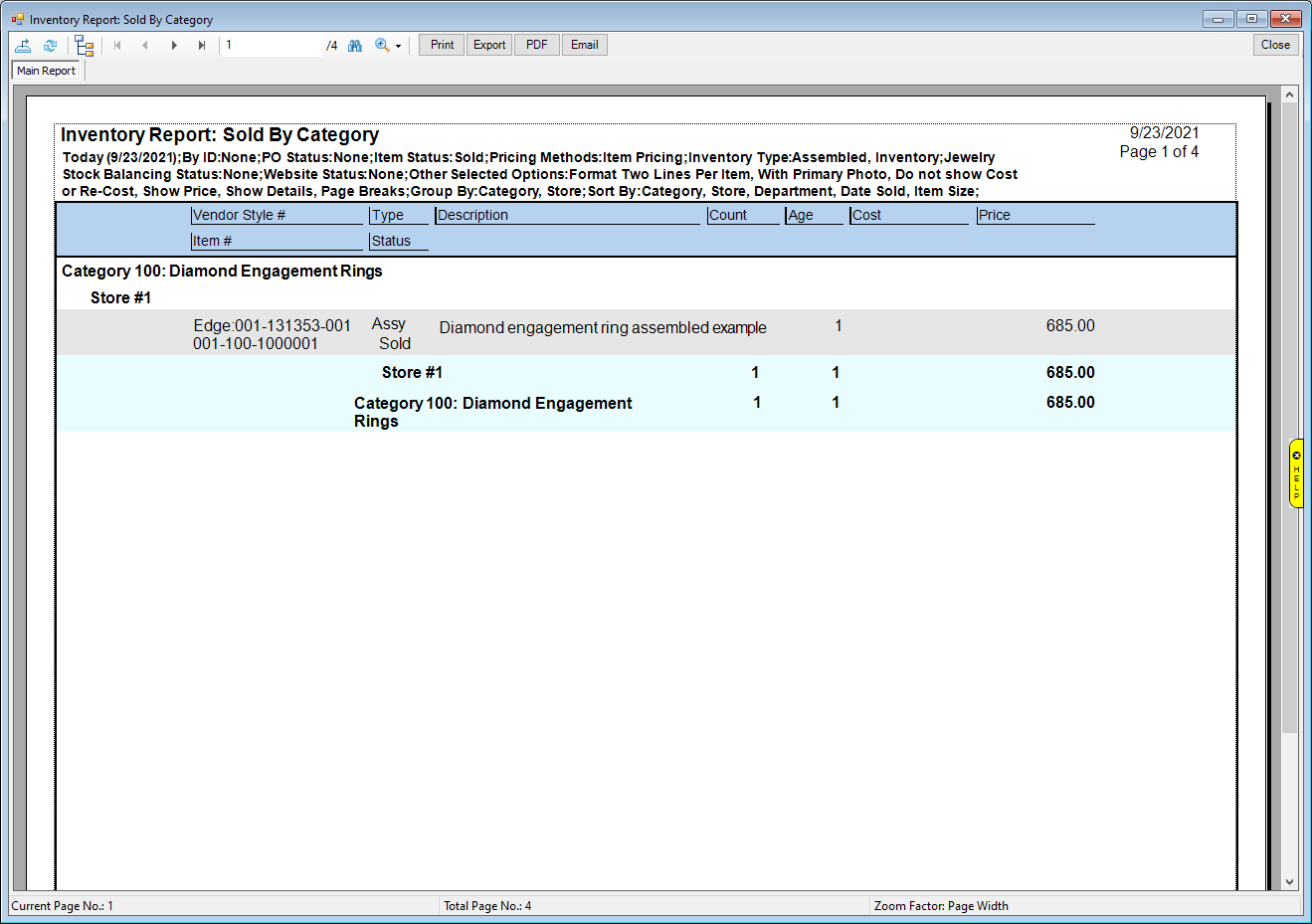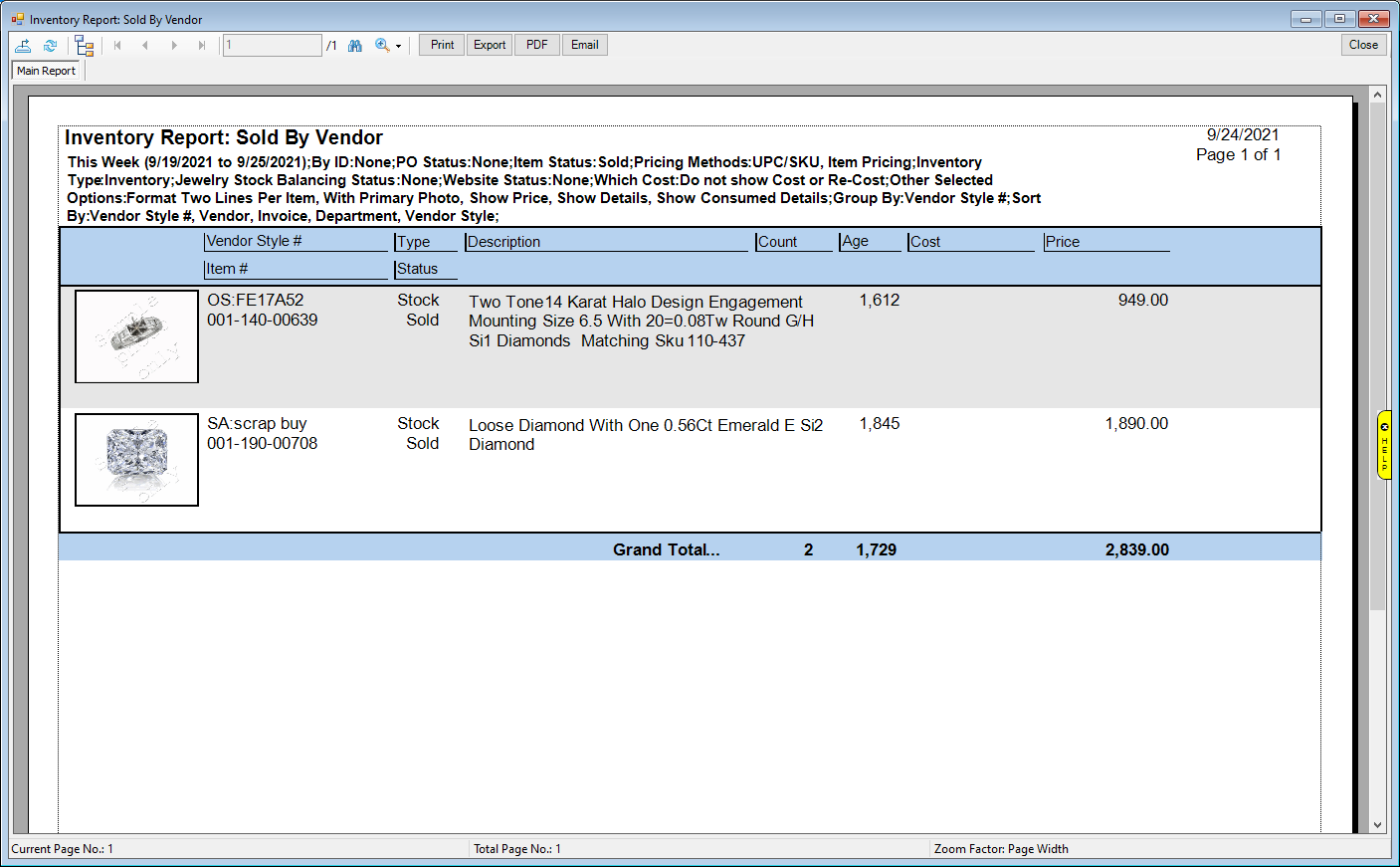The Edge has two ways to combine items: Assembly and Joined. Both have their place, and it is important to understand the differences. Depending on your ultimate goal for a piece, you will choose one option or the other.
For example, when looking to create a piece for your showcase from existing items, you may choose to use Assembly.
Alternatively, you may choose Joined over Assembly when looking to track the performance of the individual components used within a combined piece.
Another difference to note when deciding which solution is best for any given situation is how sold Assembled items appear on Sold reports vs. Joined items. Reporting on Assembly vs. Joined items examples are shown below.
Assembled
When you Assemble an item, you are taking individual parts and creating one new piece. The components get marked as consumed and all report tracking is done on the new, final, assembled piece. When this item sells, reports will only show the one assembled item – not its individual components.

Joined
In comparison, when you Join items, you are combining items while retaining the individual tracking of each component. This is the best option if you’re looking to track the age of each individual component for identifying and ordering fast sellers, moving aged inventory, and more.
When the Joined item sells, reports will show each component item separately. This allows you to track their performance separately, allowing for more informed inventory ordering decisions based on these items.
